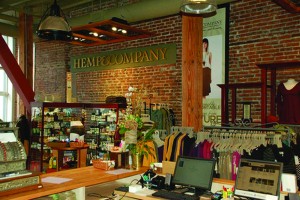
Buy Less, Buy Better, Buy Local
by Carole Pearson
“When we think of pollution, we envision coal power plants, strip-mined mountaintops and raw sewage piped into our waterways.
We don’t often think of the shirts on our backs. But the overall impact the apparel industry has on our planet is quite grim,” writes Glynis Sweeny in “Fast Fashion is the Second Dirtiest Industry in the World, Next to Big Oil”.
In Overdressed: The shockingly high cost of cheap fashion, author Elizabeth Cline states,“The natural resources that go into fibre production every year now demand approximately 145 million tons of coal and somewhere between 1.5 trillion and two trillion gallons of water.”
“Disturbingly, about half of our wardrobe is now made out of plastic, in the form of polyester,”
“More than anything, the sheer amount of production is a problem,” comments Bangalore University’s Lakshmi Challa in her report, the Impact of Textiles and Clothing Industry on the Environment. “From wastewater emissions to air pollution and energy consumption the textile industry weighs heavily in the environment.”
Hundreds of textiles factories line the shores of Indonesia’s Citarum River. According to Greenpeace, “The printing and dying processes are particularly chemically intensive and have contributed to the Citarum developing a reputation as one of the dirtiest rivers on earth.”
Earth can’t produce enough natural fibres to fill demand, Challa says. Synthetics are popular, low-cost alternatives but far from ideal. For one thing, they are hard to recycle. Nylon takes 30 to 40 years to decompose. Nylon production creates nitrous oxide, “a greenhouse gas 310-times more potent than carbon dioxide,” notes Challa.
Synthetic fabrics, such as polyester, nylon, acrylic, Lycra, Spandex, and PVC, are all petroleum-based, meaning they are non-biodegradable. Their manufacture uses vast amounts of water and crude oil.
“Disturbingly, about half of our wardrobe is now made out of plastic, in the form of polyester,” says Cline. People who scorn bottled water because of the plastic waste it could be guilty of owning a closet full of plastic, just in a different form.
“Of the billions of new clothing items purchased each year, 90 percent is transported from offshore factories by container ships using the dirtiest of fossil fuels – low grade bunker fuel.”
Lorna Knowles is co-owner of Victoria’s Hemp and Company which sells clothing made of natural fibres. She says, “We found the more research we did validated the path we have taken. Like the impact of polyester and even recycled polyester that is made into the fleece that people buy in great quantities.
“The fabric breaks down and produces micro-particles that go into the environment. What people don’t realize is, (micro-particles of) their clothing goes into the ocean with every washing.”
Of the billions of new clothing items purchased each year, 90 percent is transported from offshore factories by container ships using the dirtiest of fossil fuels – low grade bunker fuel – according to Sweeny.
In contrast, Hemp & Company stocks its own clothing line. “We have a local designer buying fabric from a local distributor. We employ a pattern maker for our factories in Vancouver. It keeps money in the local economy, and is good for more people,” says Knowles. The store also carries other Canadian-made clothing.
Buying fewer clothes will help the environment. As Knowles suggests, “It’s about making a conscious decision to buy less but buy better quality.”
Up next – recycling fashion in Saanich.











